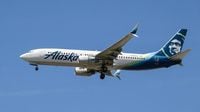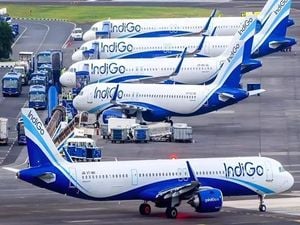Travelers in the United States are facing a shifting landscape in air travel as airlines reconfigure routes, respond to changing market demands, and airports gear up for major upgrades. Two recent announcements—one from Avelo Airlines about its withdrawal from Connecticut’s Bradley International Airport, and another from Alaska Airlines launching a long-awaited direct route between Hollywood Burbank Airport and Honolulu—highlight the dynamic nature of the aviation industry as it heads into 2026.
Ultra-low-cost carrier Avelo Airlines, which made a splash in Connecticut just a year ago, is now preparing to pull out of Bradley International Airport entirely. According to WFSB-TV in Hartford, the Connecticut Airport Authority (CAA) revealed Avelo’s decision on Thursday, October 23, 2025, sending a jolt through the state’s travel community. Avelo’s three nonstop routes from Bradley—to Montego Bay, Jamaica; Cancún; and Punta Cana, Dominican Republic—will all be discontinued in January 2026. This means Connecticut will lose its only nonstop service to Montego Bay, a fact that has not gone unnoticed by local officials and travelers alike.
The CAA responded with clear disappointment and a bit of exasperation. In a statement reported by WFSB-TV, the authority said, “The CAA is disappointed and surprised to learn of Avelo’s decision to pull out of Bradley International Airport, particularly its decision to cancel the state’s only nonstop service to Montego Bay.” The CAA further criticized the carrier’s rationale, calling the abandonment of the Montego Bay route “inexplicable” and suggesting that Avelo was seeking to benefit from state-provided incentives while sidestepping its responsibilities as an airport operator.
It’s worth noting that Avelo’s time at Bradley was brief. The airline launched its first flights to Montego Bay and Cancún in November 2024, entering the market with state support. As reported by the Hartford Business Journal, Connecticut offered Avelo a revenue guarantee, assistance with marketing, and waivers for airport landing fees and terminal rent during its first year. This sort of arrangement isn’t uncommon for airports trying to attract new carriers and expand their route networks, but it does come with expectations of longer-term commitment.
Avelo, for its part, defended the decision in a statement to WFSB, emphasizing the financial realities behind its exit: “Like all business decisions we make, this exit was made based on facts – the revenues on the market did not cover the costs. Any other insinuation to the contrary is unfortunate, false, and uninformed.” The airline cited “multiple business factors,” with lack of demand topping the list. The CAA, however, remained unconvinced, especially regarding the Montego Bay route, which they viewed as a vital connection for the state.
While Avelo is leaving Bradley, it’s not leaving Connecticut altogether. The airline will continue to operate from its base at Tweed-New Haven Regional Airport, maintaining a presence in the state even as it withdraws from its short-lived venture at Bradley. For local travelers, especially those who relied on the direct Jamaica route, the loss is significant. The CAA has pledged to work on restoring nonstop service between Connecticut and Jamaica by attracting another airline to fill the gap. Whether that effort will bear fruit remains to be seen, but the agency’s determination is clear.
Meanwhile, on the other side of the country, Alaska Airlines is making headlines with a move that’s sure to please Southern California travelers dreaming of Hawaiian getaways. After more than two decades, Alaska Airlines is reconnecting Hollywood Burbank Airport (BUR) with Honolulu’s Daniel K. Inouye International Airport (HNL). The new daily seasonal service will begin on May 13, 2026, marking the first direct flight between the two airports in over 20 years.
This announcement, reported by multiple outlets including the airline itself, comes at a pivotal moment for Hollywood Burbank Airport. The new route is set to launch just months before the opening of the airport’s replacement passenger terminal, scheduled for October 2026. The new terminal is expected to significantly enhance the airport’s capacity and the overall passenger experience, providing a modern and efficient gateway for travelers. For those weary of the hustle and bustle at Los Angeles International Airport (LAX), Burbank’s smaller size and easier access are major draws.
Alaska Airlines’ decision to launch this route seems well-timed, aligning with a growing demand for convenient, direct flights to popular vacation destinations like Hawaii. The flights will be operated on a Boeing 737 Max 8, a modern aircraft designed to deliver both comfort and fuel efficiency. Tickets for the new route went on sale as of October 24, 2025, giving eager vacationers plenty of time to plan their trips for the inaugural season.
For Southern California residents, this new service offers a welcome alternative to the often congested LAX. Burbank’s location and size make it an attractive option for travelers seeking a more relaxed airport experience. The addition of a direct flight to Honolulu is expected to draw both leisure and business travelers, further boosting the airport’s profile as it prepares for its terminal transformation.
These two developments—Avelo’s withdrawal from Bradley and Alaska’s expansion at Burbank—underscore a broader trend in the airline industry. Carriers are constantly reevaluating their networks, weighing factors like demand, operational costs, and strategic partnerships. Airports, in turn, must adapt, offering incentives to attract new routes while investing in infrastructure to stay competitive. When one door closes, as it has in Connecticut, another opens, as seen with Alaska’s new Hawaiian connection from Burbank.
Travelers are the ultimate beneficiaries (or, sometimes, the casualties) of these shifts. As airlines like Avelo make tough calls about which markets to serve, and as airports like Burbank invest in upgrades and new routes, passengers gain new options but can also lose cherished connections. The coming years promise more changes, with airlines and airports alike seeking to balance short-term financial pressures with long-term growth and service goals.
For Connecticut, the loss of Avelo’s Montego Bay flight is a blow, but the CAA’s commitment to restoring the route hints at ongoing efforts to keep the state connected to key international destinations. In California, the return of direct flights from Burbank to Honolulu is a reminder that the airline industry, while unpredictable, is always looking for ways to bring people closer to the places they want to go. As 2026 approaches, travelers would do well to keep an eye on these developments—because in the world of aviation, the only constant is change.




